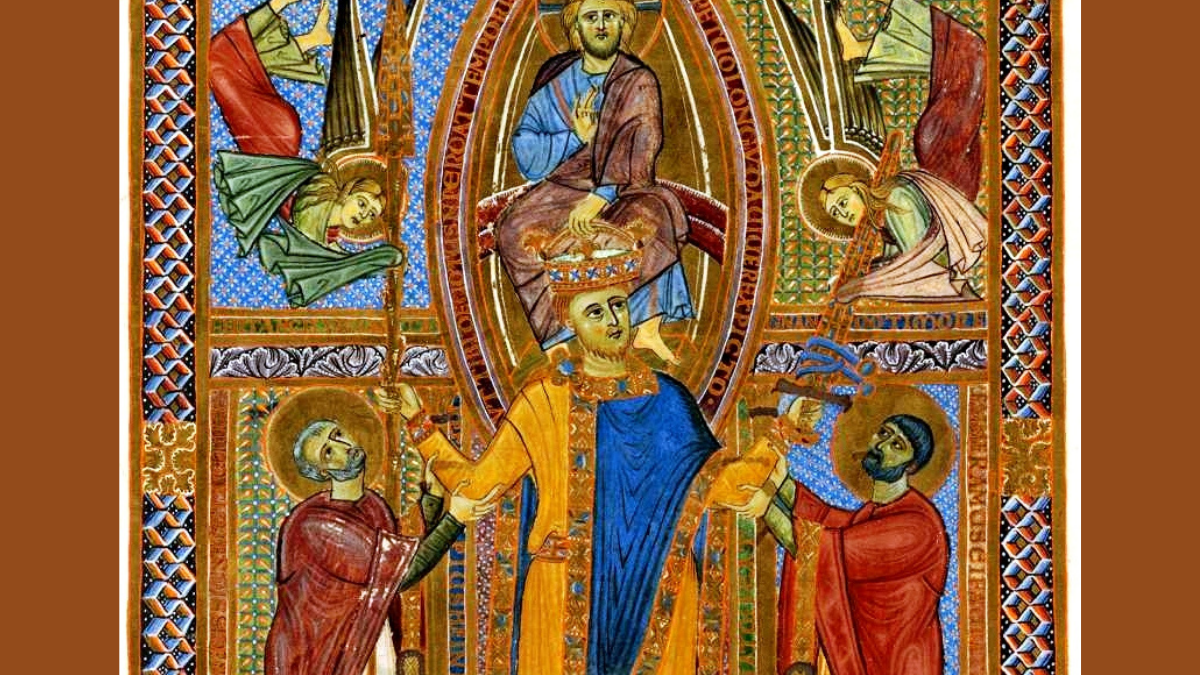William’s immediate successors extended his system. They made their administrators depend on the king alone by paying them fixed salaries. Household and curia regis grew in size, and special functions began to develop. Within the curia regis the king’s immediate advisers became a “small council” and the full body met less often. The royal chancery (secretariat), also grew.
Henry I (r. 1100_1135) allowed his vassals to make “scutage” payments to buy themselves off from military service. He also collected still heavier payments from royal towns or borouoghs. To handle the increased income, the first specialized treasury department came into existence, the exchequer.
Because Henry’s only legitimate son drowned, the succession was disputed between Henry’s daughter, Matilda, wife of Geoffrey IV of Anjou, and Henry’s nephew, Stephen of Blois. A civil war (1135-1151) between their partisans produced virtual anarchy in England. Yet when Henry II (r. 1154-1189), son of Matilda and Geoffrey, succeeded to the throne, he found the foundations of a powerful monarchy.
Stormy and energetic, Henry II had more than eleven hundred divisive, unlicensed castles destroyed. From the contemporary Dialogue Concerning the Exchequer, written by his treasurer, we learn how the money rolled in: from scutage plus special fees for the privilege of paying it, from fines, from tallage paid by the boroughs, and from a new tax collected from the knights who did not go on Crusades. Even more important than this strengthening of financial institutions was Henry’s contribution to the law of England.
New law could not, in theory, be made at all. Law was what had always existed, and it was the job of the lawyers and government officials to discover what this was and to proclaim it. Henry I therefore did not fill statute books with new enactments; instead he asserted that he was ruling in accordance with the law of Edward the Confessor. By developing old instruments in new combinations, he created the new common law—law common to all of England because it was administered by the royal courts.
The chief royal instruments were writs, juries, and traveling justices. If, for example, someone seized a subject’s property, by the middle of Henry II’s reign the victim could buy a royal writ: an order from the king directing a royal official to give the plaintiff a hearing. The official would assemble a group of twelve neighbors who knew the facts in the case, called a jury.
They then told the truth as they knew it about whether dispossession had taken place, answering yes or no, and thus giving a verdict. These early juries were not trial juries in the modern sense, but men who were presumed to be in the best position to know the facts already. By similar machinery of writ and jury, inheritances unjustly detained could be recovered, and a person unjustly held as a serf could be freed. No matter who won, the royal exchequer profited, since the loser had to pay a fine.
Building on the practice begun by Henry I, Henry II also regularly sent justices out to the shires. On their travels they were instructed to receive reports from the local officials and to try all cases pending in the shire court. Moreover, the sheriffs had to bring before the justices from each hundred and township a group of sworn men to report under oath all crimes that had occurred since the last visit of the justices and to indicate whom they considered to be the probable criminal in each case.
This was another use of the jury, the jury of presentment, since it “presented” the names of suspect criminals. (It is the ancestor of the modern grand jury—”grand” in the sense of large—consisting of more men than the twelve that took part in the petty juries.) Again the treasury profited, as the justices imposed heavy fines.
Henry II, however, failed to limit the competing system of canon law. He had appointed his friend and chancellor Thomas a Becket (1118-1170) archbishop of Canterbury. But once he had become archbishop, Becket proved inflexibly determined not to yield any of the church’s rights, but rather to add to them whenever he could. A great quarrel between the two broke out over the question of clerics convicted of crime.
In publishing a collection of largely earlier customs relating to the church (Constitutions of Clarendon, 1164), Henry included a provision that clerics charged with crimes should be indicted in the royal court before being tried by the bishop’s court, and then, if convicted, returned to the royal authorities for punishment. Becket refused to agree to this part of the document and appealed to the pope for support.
Although the issue was compromised after a dispute that lasted six years, Henry in a fit of temper asked whether no one would rid him of Becket. Four of his knights responded by murdering Becket in his own cathedral at Canterbury. Henry swore to the pope that he was innocent of complicity in the murder, but he had to undergo a humiliating penance and, more important, he had to yield on the issue.
The church in England won the sole right to punish its clergy. Moreover, Henry had to accept the right of litigants in church courts to appeal to Rome directly, without royal intervention of any sort. This meant that the papacy had the ultimate say in an important area of English life. It was a severe defeat for Henry’s program of extending royal justice. Yet the other clauses in the Constitutions of Clarendon were not challenged, and the king continued to prevent the pope from directly taxing the English clergy.

